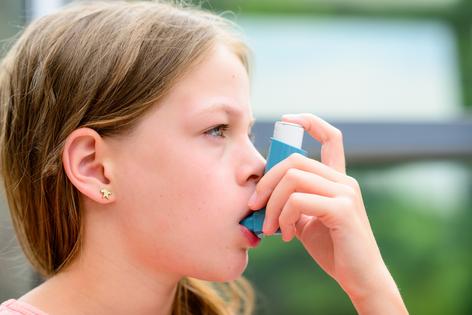A refresher on childhood asthma: What families should know and do
Published in Health & Fitness
Asthma is the most common chronic lung disease in children. In the US, it affects about 6 million children, or about one in every 12 children.
Breathing is key to life, obviously, so asthma can make life very hard. It can make going for a walk outside feel very hard. It leads not just to visits with the doctor or to the emergency room, and to hospitalizations, but also to missed school, missed work for parents, missed events, and missed activities.
The good news is that asthma is very treatable. If parents, children, and doctors work together, a child with asthma can lead a healthy, normal life. Here’s what you need to know and do.
Know your child’s symptoms
Wheezing is definitely a symptom of asthma, but a dry persistent cough can be as well (for some children, this occurs mostly at night).
Watch for signs that a child is working harder to breathe. One sign is skin tugging inward between, on top of, or below the ribs. Difficulty talking in long sentences is another sign of this.
Some children with exercise-induced asthma avoid exercise; if your child is choosing to be less active, talk to them about why.
Know your child’s triggers
There are many different triggers for asthma, including:
Understand your child’s medications
Several kinds of medicines are used to treat asthma, including:
Some people with severe asthma need other treatments, such as allergy shots for severe allergies, or medications like dupilumab that work in the body to fight inflammation. This is far less common.
Use medication correctly
Sometimes medications and medication regimens can be confusing. That’s why everyone with asthma should have a written Asthma Action Plan that spells out exactly what they should do and when.
If your child uses an inhaler, make sure that they are doing it right! For most inhalers, it’s important to use a spacer, which is a tube that attaches to the inhaler and helps to ensure that the medication gets into the lungs and not just the mouth or surrounding air.
If you have any questions about anything your child is prescribed, call your doctor.
Meet with your doctor regularly
If your child’s asthma is anything more than very mild (a few mild attacks a year), you need to check in more frequently than at the yearly checkup. Extra check-ins give you a chance to talk to your doctor about how things are going — and give your doctor a chance to tweak your child’s regimen so that your child can live the healthiest, happiest life possible.
(Claire McCarthy, M.D., is a senior faculty editor at Harvard Health Publishing.)
©2023 Harvard University. For terms of use, please see https://www.health.harvard.edu/terms-of-use. Distributed by Tribune Content Agency, LLC.







Comments